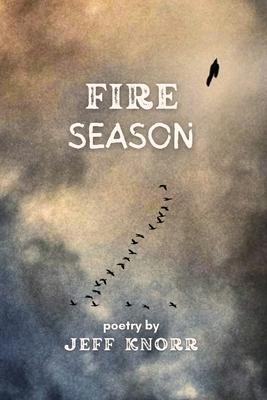Fire Season is a collection of poems, both lyrics and prose poems that illustrate mass incarceration and the experience of having a family member incarcerated. The poems build around the narrative of father and son sharing a very close bond and then being separated through incarceration. The manuscript explores the ways in which family members cope with the separation and isolation of having siblings, sons, daughters or parents locked up. Some of the poems deal with the lives of many who have been incarcerated and have been disappeared by the system through incarceration in exceedingly remote locations to lengthy solitary confinement without visitation. Issues include visiting, phone calls, care packages, and coping with stories shared by incarcerated family-while sharing stories of what's happening inside prison creates connection, it is also difficult to hear and hold those stories. It is in this way that as the system promotes a violent setting inside, and the system is also violating family members through an indirect violence against them. One of the main themes the collection raises is the absence, the disappearing, of loved ones as they are incarcerated and the disappearance of families to those who are incarcerated. For families it may occur because of cost and distance needed to travel to visit or the cost of phone calls. It can occur through lack of forgiveness. It can occur through a lack of literacy and the ability to correspond via letters or e-mail. What we know is that the disappearance of connection, the erosion of connection, leads to isolation, anxiety, depression, violence, and a continued prison cycle.

Fire Season is a collection of poems, both lyrics and prose poems that illustrate mass incarceration and the experience of having a family member incarcerated. The poems build around the narrative of father and son sharing a very close bond and then being separated through incarceration. The manuscript explores the ways in which family members cope with the separation and isolation of having siblings, sons, daughters or parents locked up. Some of the poems deal with the lives of many who have been incarcerated and have been disappeared by the system through incarceration in exceedingly remote locations to lengthy solitary confinement without visitation. Issues include visiting, phone calls, care packages, and coping with stories shared by incarcerated family-while sharing stories of what's happening inside prison creates connection, it is also difficult to hear and hold those stories. It is in this way that as the system promotes a violent setting inside, and the system is also violating family members through an indirect violence against them. One of the main themes the collection raises is the absence, the disappearing, of loved ones as they are incarcerated and the disappearance of families to those who are incarcerated. For families it may occur because of cost and distance needed to travel to visit or the cost of phone calls. It can occur through lack of forgiveness. It can occur through a lack of literacy and the ability to correspond via letters or e-mail. What we know is that the disappearance of connection, the erosion of connection, leads to isolation, anxiety, depression, violence, and a continued prison cycle.